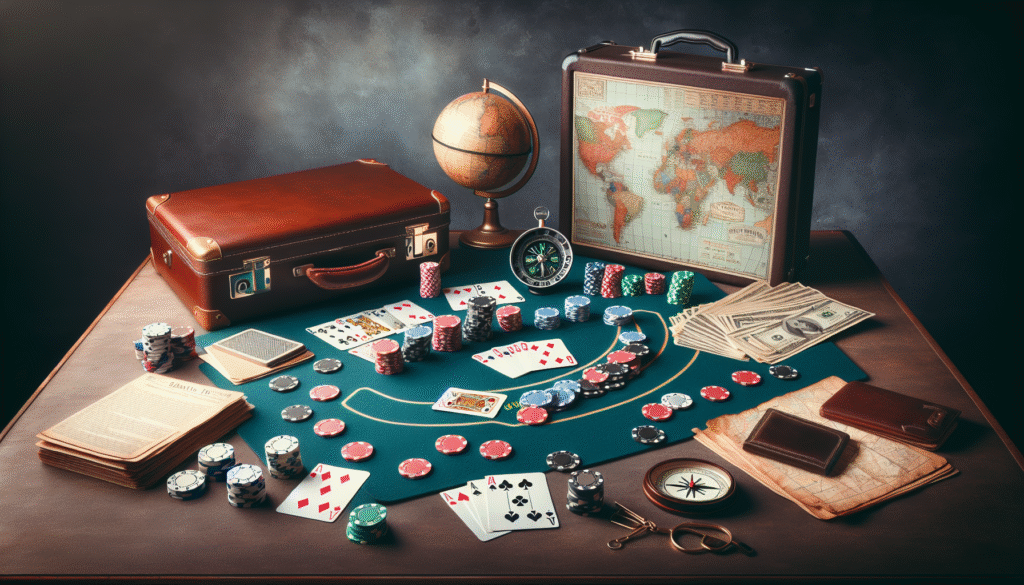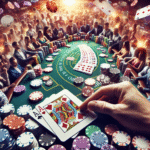
Smart Casino Trips: Folding Poker Table Top Tips for Travelers
If you’re a casino traveler seeking an edge in table games and travel planning, mastering the art of choosing and using a folding poker table top can transform your trip. Our guide offers step-by-step insights on bankroll math, rule comparison, real-world examples, and advanced tools to ensure that whether you’re playing blackjack, poker, or roulette, you can make every bet count while enjoying a well-planned journey.
Why a Folding Poker Table Top Matters for Casino Travelers
The folding poker table top is more than just a portable gaming surface—it represents a strategic asset for planning robust casino trips. Designed for both home setups and on-the-go play, these table tops allow enthusiasts to simulate game conditions, experiment with betting strategies, and review table rules before stepping into a casino. For example, by comparing the differences such as 3:2 vs 6:5 blackjack, you can tweak your bets to minimize the house edge.

When planning a trip, consider tools like Wizard of Odds for rule calculators and betting strategy simulators. These detailed calculators help you evaluate the expected hourly loss. Using the formula Expected Loss = Bet Size × Decisions per Hour × House Edge, a simulation might show that a $10 bet on a game with a 1.41% edge could cost you approximately $1.41 per hour of play.
Moreover, the right folding poker table top provides a realistic overview of table dimensions and condition, making it easier to plan for tournaments or casual play at home. It also acts as a precursor for evaluating casino floors, identifying low minimum tables, and understanding rules that differ by venue.
Advanced Game Math and Rule Comparisons: What You Need to Know
For experienced travelers, understanding rule deltas is as crucial as booking the right flight. For instance:
- 6:5 Blackjack: Adds about +1.39% to the house edge versus the more favorable 3:2 rule.
- H17 Blackjack: Can add another +0.22% risk compared to S17.
- DAS (Double After Split): Typically adds +0.14%, while Late Surrender can reduce the effective loss by about -0.08%.
For roulette, keep a close eye on the wheel type: Single-zero wheels produce ~2.70% house edge compared to 5.26% for double-zero and 7.69% for triple-zero wheels. In craps, optimizing bets on Pass Line (1.41% edge) and Don’t Pass (1.36% edge) along with odds plays ensures minimal loss.
Integrating these calculations in your trip planning can be automated with practical tools. Consider this simple JavaScript snippet to compute your expected hourly loss:
function calcExpectedLoss(betSize, decisions, edge) {
return betSize * decisions * edge;
}
// Example: $10 bet, 60 decisions/hour, 1.41% edge
console.log(calcExpectedLoss(10, 60, 0.0141));
This basic calculator shows a rough expected loss of $8.46 per hour, providing you an actionable metric to budget your playtime and bankroll envelopes during your casino trip.
Real Casino Travel Tools and Trip Case Studies
Alongside game math, advanced tools such as Vegas Advantage offer table-minimum surveys for various properties. These resources are updated regularly to reflect rule changes, minimum bet adjustments, and new comp policies available at major casinos.
Another valuable asset is Blackjack Apprenticeship, which provides rich decision-making charts and rule variant comparisons that help you pinpoint where to find the best your money can buy. Case Study: A seasoned traveler planned a 3-day Vegas trip with a $900 bankroll. By leveraging ETGs (Estimated Table Goals) and using both Vegas Advantage and Wizard of Odds, the traveler identified a downtown casino featuring a $10 3:2 S17 blackjack table. The calculated expected hourly loss was reduced, increasing both table time and comp accrual significantly.

Your real-world trips are often constrained by regional regulations. Familiarize yourself with self-exclusion and responsible gaming tools available from authorities like the Nevada Gaming Control Board (NVGCB), UK Gambling Commission (UKGC), and Singapore’s GRA/NCPG initiatives. Such integration of RG tools not only safeguards your play but also helps in planning a responsible, enjoyable casino travel experience.
It is also wise to schedule your trip during off-peak times when lower table minimums are common. For instance, detailed surveys from MGM Rewards and Caesars Rewards often show significant comp and loyalty benefits during weekdays or shoulder seasons.
Optimizing Your Casino Trip: Step-by-Step Action Plan
By combining the insights of folding poker table top use with advanced planning, you can achieve concrete improvements in play and cost management. Here’s how:
- Plan with Precision: Use tools such as Vegas Advantage to identify low minimum tables available in your target location. Visit our bankroll management guide for tailored envelope strategies.
- Simulate Play: Set up your portable folding poker table top at home to experiment with different rule sets like 3:2 vs 6:5 blackjack. Familiarize yourself with decision outcomes using calculators from Wizard of Odds.
- Budget Your Session: Employ the expected hourly loss formula to create budgets and envelope allocations before your play. Integrate insights from real-time loyalty dashboards (e.g., MGM Rewards) to track comps and benefits.
- Follow Regulations: Stay informed on regulatory updates from bodies such as DICJ (Macau) and AGCO/iGaming Ontario. Implement deposit limits and self-exclusion options to manage risk effectively.
- Review Your Trip: After the session, analyze outcomes, comp earned, and gameplay statistics. Adjust future strategies based on your detailed notes and integrated tool feedback.
This structured approach ensures that whether you’re a casual player or a seasoned strategist, you maximize your trip’s value while mitigating risks and lowering expected losses.
For further guidelines on setting up your trip, check out our in-depth Vegas Low-Min Tables 2025 insights and a comprehensive rundown of casino game math in our related articles.






